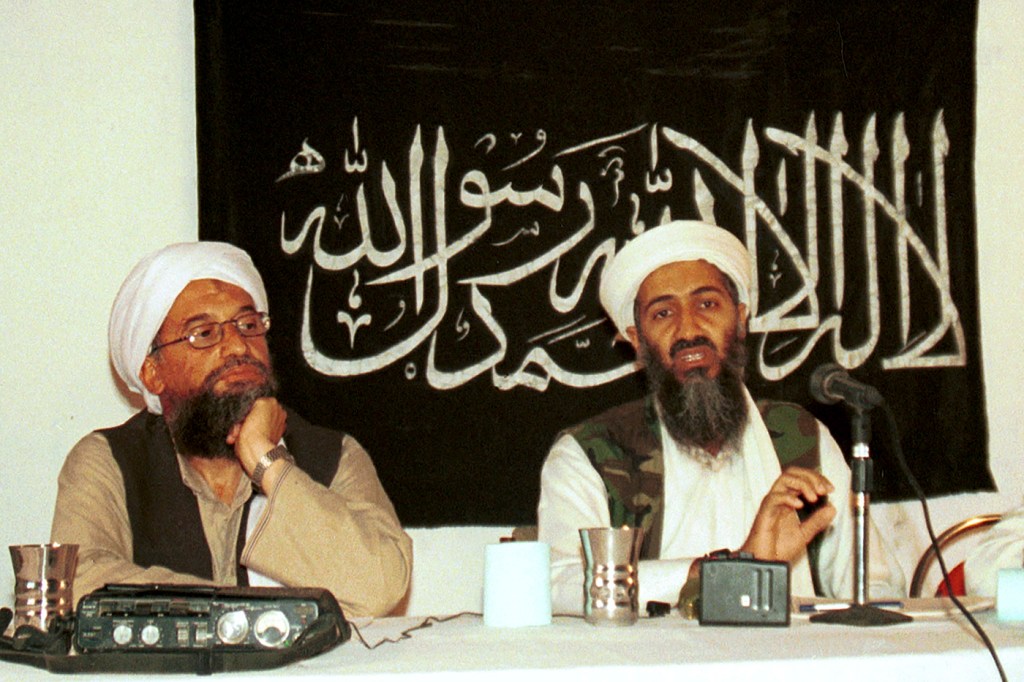The US killed another notorious terrorist by drone. Is there a cost to such killings?

President Joe Biden announced this week that, after almost two decades since 9/11, the U.S. killed Ayman al-Zawahiri, successor of Osama bin Laden and one of the most wanted terrorists in the world.
“We make it clear again tonight that no matter how long it takes, no matter where you hide, if you are a threat to our people, the United States will find you and take you out,” Biden said Monday, announcing al-Zawahiri’s death.
Al-Zawahiri was killed in a complex counterterrorism operation on the balcony of a safe house in downtown Kabul, Afghanistan, by an unmanned aerial vehicle that launched two Hellfire missiles on July 30, at 9:48 p.m. Eastern Standard Time. No other civilians, including members of al-Zawahiri’s family, were harmed in this strike, a senior administration official said.
In the last few years, the U.S. military and intelligence have successfully conducted several such special counterterrorism operations involving targeted drone attacks. Weeks earlier, on July 12, another precision drone strike killed a “top five” ISIS leader, Maher al-Agal, outside of Jindayris in northwest Syria. The ISIS leader Ibrahim al-Hashimi al-Qurayshi blew himself up during a U.S. special forces raid against him in northern Syria.

But how effective is the tactic of targeted killings in the long run, from the strategic point of view?
Max Abrahms, associate professor of political science at Northeastern and the author of “Rules for Rebels: The Science of Victory in Militant History” (2018), says that leadership decapitation has become the cornerstone of the U.S. counterterrorism strategy and took off in frequency under President Barack Obama’s administration for a number of reasons.
Big technological advances in drones development made them helpful in identifying potential targets. Modern drones are cheaper and can stay up in the sky for longer, Abrahms says.
Drone strikes suited the Obama administration well, because he opposed the Iraq War and so-called boots on the ground engagement of the American troops. Besides, the terrorism threat has metastasized and diffused internationally, and it wouldn’t be possible to deploy large numbers of troops everywhere in the world where there is a major terrorism threat, Abrahms says.
In the case of al-Zawahiri, there has been a bounty on his head of $25 million for more than two decades, because of his implication not only in the 9/11 attacks, but also the 1998 U.S. embassies bombings in the East Africa and the 2000 attack on USS Cole at a fuel stop in Yemen.
Unlike the strike that was authorized by the former President Donald Trump that killed Qasem Soleimani, an Iranian military commander of the Islamic Revolutionary Guard Corps, at the airport in Baghdad, Iraq, al-Zawahiri’s death did not cause an international outcry because he was a notorious terrorist, Abrahms says.
“The fact that Biden authorized the strike is in no way surprising,” Abrahms says. “Any president would have made the same [call]. And I think that it is the right call when it comes to justice.”
Strategically, it is more complicated, Abrahms says.
“My research demonstrates statistically that militant groups tend to become even more tactically extreme in the immediate aftermath of the leadership being taken out, in some militant groups,” Abrahms says.
Oftentimes, the leader of a militant group has a restraining effect on lower level members, and without him a terrorist group is more likely to engage in attacking civilians, he says.
However, not all groups are the same, Abrahms says. While Islamic State has been maximally extreme and ISIS leadership has been favoring mass casualty attacks against civilians world-wide, al-Qaida and Hezbollah leaders, for example, act as a restraining force of the rank and file. These groups are much more selective about which targets they attack, Abrahms says.
“Al-Qaida, although a highly concerning and dangerous terrorist group, over the years have evolved in a way that was more moderate, relative to its rival, the Islamic State,” Abrahms says. “I would say unconditionally that strategically it’s beneficial to take out the leader of ISIS. In the case of al-Qaida, I’m not quite as confident in saying that because it actually is possible that the deceased leader could be replaced by someone even more extreme.”
It remains to be seen who the successor of al-Zawahiri will be and whether his death will provoke al-Qaida into violence.
“He was always considered more of an ideologue, who was notably uncharismatic. So he didn’t command the attention within the jihadist community,” Abrahms says.
A new leader might have a different tactical plan and command the respect of jihadists.
At the same time, it is possible that targeting militant leaders can have a deterrent effect on potential leaders that it’s not worth the risk, Abrahms says.
Besides emotional payoffs of serving justice and avenging the victims of al-Qaeda’s attacks, authorizing the killing of al-Zawahiri might benefit Biden politically. When former President Barack Obama authorized the successful raid against Osama bin Laden in 2011, Abrahams says, his approval ratings grew by six percentage points.
“We’ll see whether there are any strategic benefits in terms of the effect on international security,” he says. “[War] hawks who were always skeptical of the withdrawal from Afghanistan, particularly how it was carried out, see validation in the fact that al-Qaida’s number one was sheltering there, presumably with the knowledge of the Taliban.”
Maintaining so-called over the horizon capability to make selective strikes against high value targets after leaving Afghanistan was always the plan for the Biden administration, Abrahams says.
“There is nothing, honestly, that surprising that the Biden administration carried out this attack. Perhaps the most surprising thing is how long it took to find this al-Qaida leader,” he says.
For media inquiries, please contact media@northeastern.edu.






